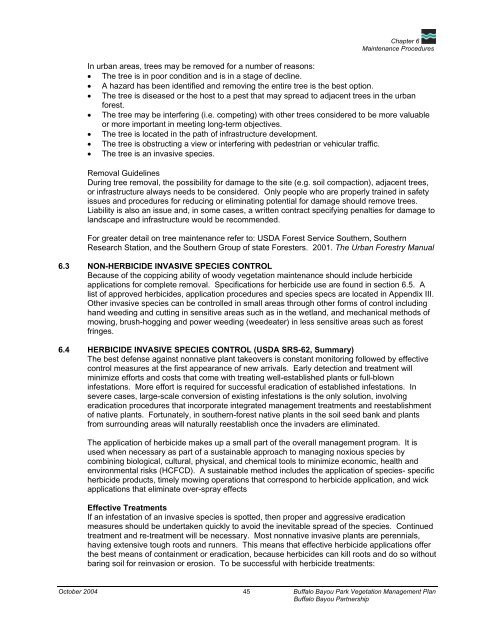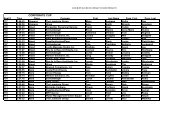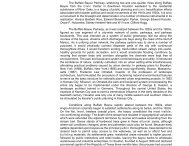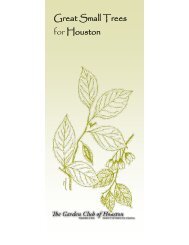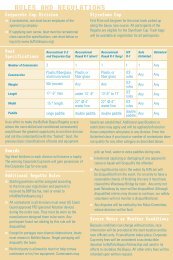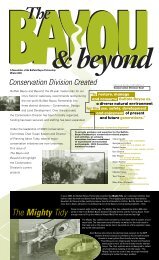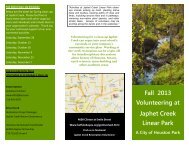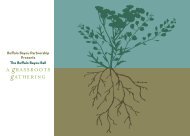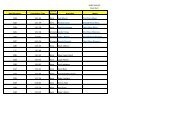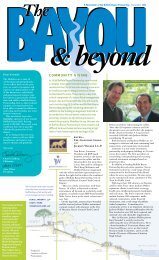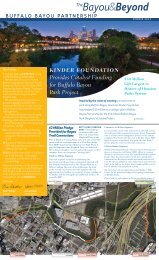Buffalo Bayou Park Vegetation Management Plan (PDF)
Buffalo Bayou Park Vegetation Management Plan (PDF)
Buffalo Bayou Park Vegetation Management Plan (PDF)
You also want an ePaper? Increase the reach of your titles
YUMPU automatically turns print PDFs into web optimized ePapers that Google loves.
Chapter 6Maintenance ProceduresIn urban areas, trees may be removed for a number of reasons:• The tree is in poor condition and is in a stage of decline.• A hazard has been identified and removing the entire tree is the best option.• The tree is diseased or the host to a pest that may spread to adjacent trees in the urbanforest.• The tree may be interfering (i.e. competing) with other trees considered to be more valuableor more important in meeting long-term objectives.• The tree is located in the path of infrastructure development.• The tree is obstructing a view or interfering with pedestrian or vehicular traffic.• The tree is an invasive species.Removal GuidelinesDuring tree removal, the possibility for damage to the site (e.g. soil compaction), adjacent trees,or infrastructure always needs to be considered. Only people who are properly trained in safetyissues and procedures for reducing or eliminating potential for damage should remove trees.Liability is also an issue and, in some cases, a written contract specifying penalties for damage tolandscape and infrastructure would be recommended.For greater detail on tree maintenance refer to: USDA Forest Service Southern, SouthernResearch Station, and the Southern Group of state Foresters. 2001. The Urban Forestry Manual6.3 NON-HERBICIDE INVASIVE SPECIES CONTROLBecause of the coppicing ability of woody vegetation maintenance should include herbicideapplications for complete removal. Specifications for herbicide use are found in section 6.5. Alist of approved herbicides, application procedures and species specs are located in Appendix III.Other invasive species can be controlled in small areas through other forms of control includinghand weeding and cutting in sensitive areas such as in the wetland, and mechanical methods ofmowing, brush-hogging and power weeding (weedeater) in less sensitive areas such as forestfringes.6.4 HERBICIDE INVASIVE SPECIES CONTROL (USDA SRS-62, Summary)The best defense against nonnative plant takeovers is constant monitoring followed by effectivecontrol measures at the first appearance of new arrivals. Early detection and treatment willminimize efforts and costs that come with treating well-established plants or full-blowninfestations. More effort is required for successful eradication of established infestations. Insevere cases, large-scale conversion of existing infestations is the only solution, involvingeradication procedures that incorporate integrated management treatments and reestablishmentof native plants. Fortunately, in southern-forest native plants in the soil seed bank and plantsfrom surrounding areas will naturally reestablish once the invaders are eliminated.The application of herbicide makes up a small part of the overall management program. It isused when necessary as part of a sustainable approach to managing noxious species bycombining biological, cultural, physical, and chemical tools to minimize economic, health andenvironmental risks (HCFCD). A sustainable method includes the application of species- specificherbicide products, timely mowing operations that correspond to herbicide application, and wickapplications that eliminate over-spray effectsEffective TreatmentsIf an infestation of an invasive species is spotted, then proper and aggressive eradicationmeasures should be undertaken quickly to avoid the inevitable spread of the species. Continuedtreatment and re-treatment will be necessary. Most nonnative invasive plants are perennials,having extensive tough roots and runners. This means that effective herbicide applications offerthe best means of containment or eradication, because herbicides can kill roots and do so withoutbaring soil for reinvasion or erosion. To be successful with herbicide treatments:October 2004 45 <strong>Buffalo</strong> <strong>Bayou</strong> <strong>Park</strong> <strong>Vegetation</strong> <strong>Management</strong> <strong>Plan</strong><strong>Buffalo</strong> <strong>Bayou</strong> Partnership


